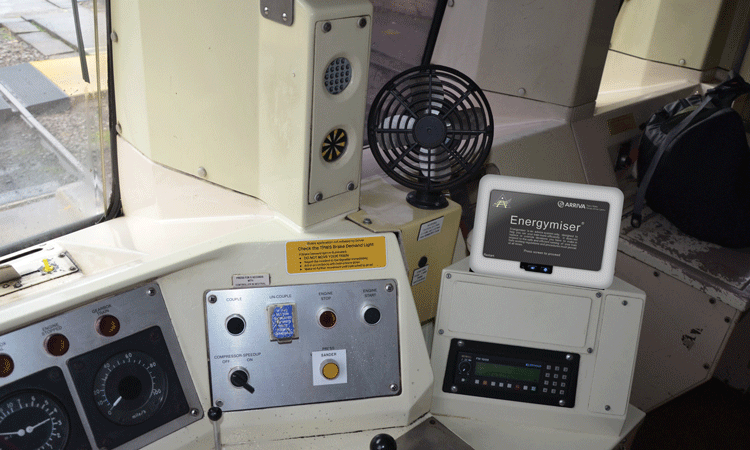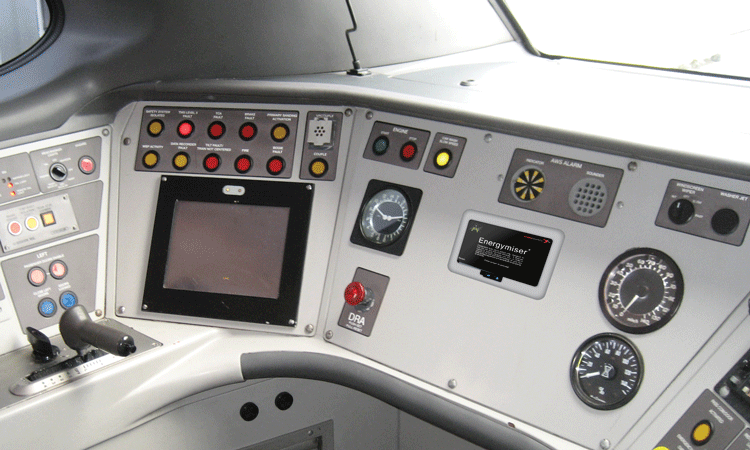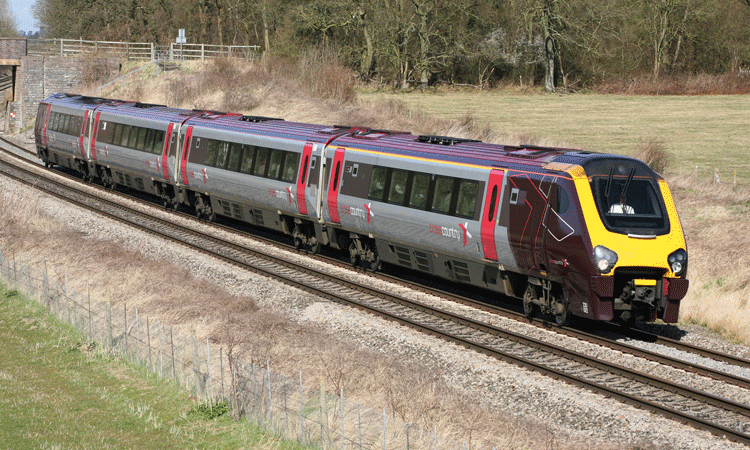Arriva builds on performance with its Driver Advisory Systems
Posted: 20 July 2014 | Roger Cobbe | No comments yet
Roger Cobbe, Policy Director at Arriva UK Trains, takes the time to provide details of how Arriva is investing in its UK train businesses by introducing train Driver Advisory Systems to reduce costs, improve the passenger experience and lessen the rail industry’s impact on the environment.


Establishing a sustainable business
Arriva is now one of the largest transport operators in Europe, with buses, trams and trains delivering over 2.2 billion passenger journeys each year across 14 countries. Our primary focus is to deliver strong, sustainable and profitable businesses; and leading the transport industry in setting the standards for quality, innovation and customer satisfaction. In the UK, we manage six rail businesses serving England, Scotland and Wales covering around 14% of the passenger rail network. Our 6,650 employees operate 403 trains and manage 394 stations, delivering 245 million passenger journeys each year.
Six years ago we looked at how we could provide a stronger centralised focus on sustainability practices to aid our UK rail businesses. To achieve this we identified two key areas in which to focus our activities: to be cleaner and greener through innovatively developing new approaches to existing practices; and playing our part in building sustainable businesses in partnership with our people and society.
As with all transport operators, energy use has a direct effect on a business’s costs and its impact on the environment. Both diesel and electric traction systems require energy to drive trains and, in a world of finite energy resources, increasing consumer demand and rising prices, all successful businesses manage its use closely.
With over 580 driving cabs on 15 different types of train used by our four mainline rail business of CrossCountry, Chiltern Railways, Arriva Trains Wales and Grand Central, we recognised there was a real opportunity to use modern eco-technology to deliver smoother and more punctual journeys for our passengers, while also reducing fuel consumption and lowering diesel emissions. We also understood the close correlation between rail performance and operating strong, sustainable rail businesses.
To realise this opportunity our procurement team scoured the world for the most appropriate system for our needs, finally settling on the advanced ‘Energymiser’ system developed by the Australian company Transportation Technology Group (TTG).
Driver Advisory Systems
Driver Advisory Systems are not new and information to help drivers deliver optimal performance has existed in some form for many years. Building on experience, it is possible to calculate the best driving approach for peak efficiency and timekeeping, and good drivers know how to do this automatically. This includes anticipating a train’s performance, knowledge of the route travelled and points on the route to accelerate, coast and brake to drive in a fuel-efficient manner that provides the best journey for our passengers. However, with advances in technology it became possible to combine this information into a single computerised system that can monitor a train’s performance, position and speed; combine this with details of the train’s characteristics, planned timings and calling pattern (timetable), and include real-time analysis of forthcoming infrastructure characteristics such as temporary speed restrictions and infrastructure problems.
TTG’s Energymiser operates using an on-board processor pre-loaded with the trains individual attributes and journey details, linked through an antenna to a shore-based system that can upload revised timetable information and speed limit changes directly to the train. The shore-based system also records information provided to the driver and the driver’s consequent actions.
It was important from the start to recognise that train drivers have many matters to contend with in their working activities, so any additional advisory system needed to be both functional, easy to operate and unobtrusive. Once initialised and loaded with a train’s specific identification, formation and driver’s PIN number, the driver also has the ability to input specific information relating to the train that could also impact on performance such as one of the train’s engine’s not functioning. This information is then analysed by the system’s computer alongside additional information uploaded regarding temporary speed restrictions or other issues that could affect the journey, and then fed directly to driver through a display showing the prime driving approach to maintain the correct timings and also use the minimum amount of fuel.


The Energymiser’s position in the driver’s cab of a Class 220
Financial benefits to the businesses and UK rail industry
Rising costs in the UK rail industry over recent years have been identified as a barrier to its continued sustainability, and government and industry studies have shown the importance of reversing this trend. Like most rail businesses worldwide, the UK rail market receives financial support from the government, and ultimately the country’s taxpayers, towards its running costs to maintain the socio-economic benefits of having an effective mass-transit system. Arriva and our industry partners are working closely together to identify ways to reduce these costs.
The abilities of the Energymiser system have already been widely demonstrated through its use in countries such as Australia, New Zealand, India, China, Africa and with other UK train operators. Its ability to achieve the primary goal of reducing fuel consumption is immediately apparent and, despite the wide variety of train types incorporated in the four Arriva businesses that will deploy the system, we estimate that fuel savings should range between 5-15%. With the combined weekday total of 1,686 diesel train service each weekday across these four businesses, the immediate cost savings to Arriva through reduced fuel demand will be significant.
Reducing rail’s environment impact
The equally important parallel effect to reducing fuel use is its consequent effect on reducing the environmental impact of transport operations. In 2011, the UK rail industry issued an Initial Industry Plan covering the period 2014 to 2019, which set out how it could work with the industry’s regulators and funders to lower operating costs, upgrade and enhance the rail network and reduce carbon emissions per passenger kilometre by 25%. While a significant element of this centred on a country-wide increase in electrified rail lines, improved fuel efficiency for passenger and freight operations formed an element of these plans. The report showed that, while passenger and freight rail transport were already a low carbon transport mode, with emissions of 53gCO2 and 29gCO2 per passenger kilometre respectively and one of the lowest of all forms of powered transport, there remained a role for rail to contribute more to achieving the national targets for reduced carbon emissions.
The deployment of TTG’s Energymiser Driver Advisory System across Arriva’s fleets of trains presented an opportunity for us to contribute directly to achieving the goals. The system’s ability to help drivers operate more efficiently by understanding the optimum braking and acceleration points, together with greater opportunities to coast instead of using the train’s engine power, will lead to an immediate reduction in carbon-based fuel use and a lowering of our businesses carbon emissions.


CrossCountry will fit the Driver Advisory Systems to the businesses 57 Class 220/221 DEMUs
Better performance
Alongside the Energymiser system’s ability to lower fuel usage, the system also delivers significant opportunities to ensure rail passengers receive a punctual and reliable journey. Britain’s railways are becoming increasingly congested, with record numbers of people travelling by rail and over 4,000 more train services each weekday than 15 years ago. Very little of the UK’s rail network is entirely self-contained, leaving many intersections and crossing points where services must be planned carefully to deliver a robust and reliable national timetable. This means any delay to one train presents the risk of exporting delays across the rail network.
The Energymiser system’s visual display in the drivers cab includes information on the train’s position, speed, target times and expected arrival timings. In addition, the system’s ability for real-time updating to account for unplanned delays, infrastructure congestion and temporary speed restrictions allows a train driver to accurately see the time they will arrive at given points during their journey. This information allows the system to dynamically adjust its calculations and deliver the optimal driving actions to recover from delays.
A secondary ability of the system includes the opportunity for a driver to input the known cause of any delay experienced during the journey. This provides invaluable information to understand the root causes of delays, which can then be utilised when reviewing the system data to identify trends for investigation to prevent regular or occasional delays caused by infrastructure problems or timetabling inaccuracies.
Delivery
Arriva awarded a contract to TTG in December 2013 and its installation across our various fleets in the UK began in the spring of 2014. At CrossCountry, the system is being fitted to the business’s 57 Class 220/221 DEMUs, 29 Class 170 DMUs and its five Class 43 High Speed Train ‘HST’ diesel trains. Chiltern will utilise the system on its 58 Class 165/168 DMUs, four Class 172 DMUs and six Class 68 diesel locomotives. Grand Central will equip its five Class 180 DMUs. Arriva Trains Wales will be fitting the system onto its 68 Class 150/153/158 DMUs, 30 Class 142/143 DMUs, 27 Class 175 DMUs and three Class 67 diesel locomotives and three driving trailer vehicles.
CrossCountry and Chiltern Railways will be equipped first, followed by Arriva Trains Wales and Grand Central later in 2014. Along with these four Arriva businesses we have retained an option to explore the potential for Energymiser to be installed at our joint-venture rail business London Overground Rail Operations (LOROL), and the system’s success in the UK will also be watched closely to see if there is an opportunity to expand its use to Arriva’s other rail operations across Europe.
This £4.5 million investment by Arriva will ensure our UK train drivers have access to the most modern Driver Advisory Systems available and help them maintain our record for delivering punctual and reliable services across the UK.


Issue
Related topics
Digitalisation, Passenger Experience/Satisfaction, Rolling Stock Orders/Developments, Technology & Software








